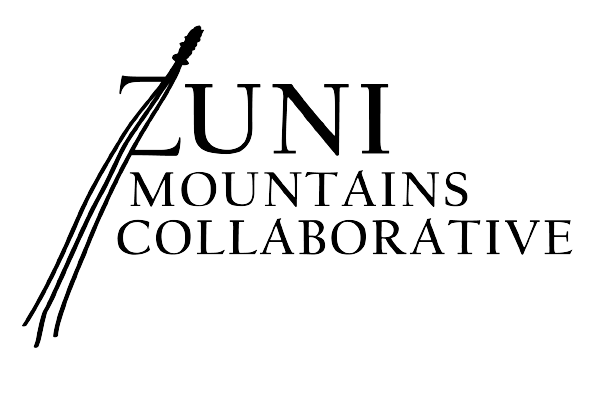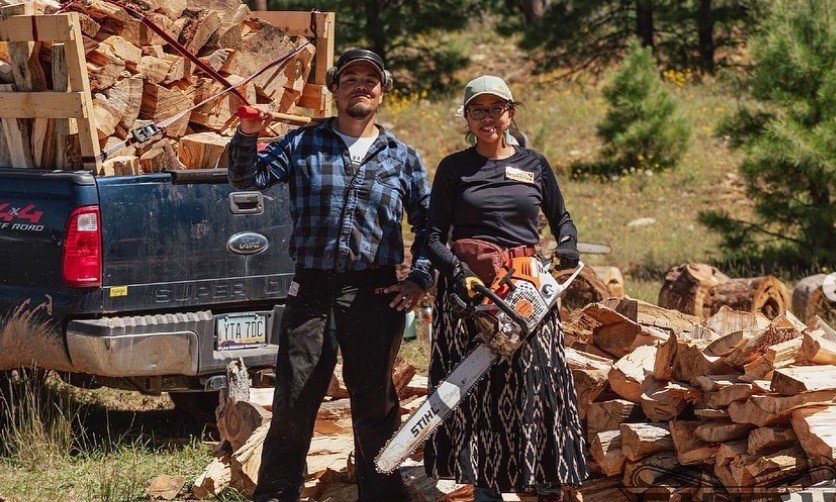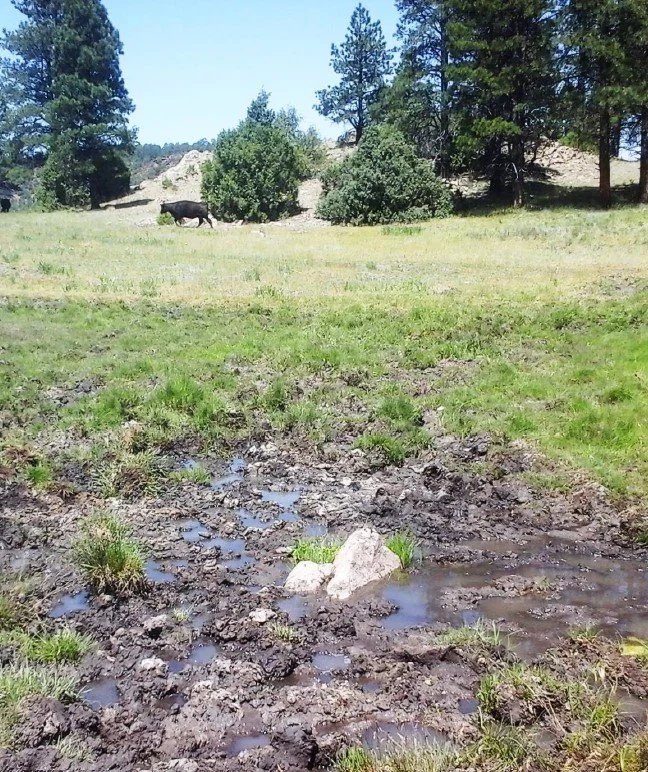Hello Zuni Mountains Collaborative community!
In mid-April, individuals representing Tribes, non-profit organizations, agencies, natural resource departments, and communities gathered in the Future Foundations Family Center in Grants for the Zuni Mountains Collaborative (ZMC) spring community meeting.
The meeting kicked off with a presentation from Niki vonHedemann of the Ecological Restoration Institute (ERI) at Northern Arizona University on perceptions of collaborative governance as documented in a survey distributed to ZMC members in late 2022. Results showed that the primary motivation for involvement in the Collaborative is to restore forest resilience, followed by habitat protection and reduction of community wildfire risk. While most respondents agreed that the Collaborative has improved the collaborative process, enhanced decision-making and enabling cross-boundary planning were identified as key areas for improvement. ERI will conduct a follow-up survey in a couple of years to track changes in perceptions of Collaborative governance.
Next, silviculturist Shawn Martin and Cibola National Forest & National Grasslands (NFNG) colleagues presented on Forest Service activities carried out in 2021-22 and those planned for 2023. An expansion of the Zuni Mountains CFLRP footprint has been approved, which will facilitate investments in the Hogback and Nutria Canyon areas. The Forest Service (FS) reported nearly $6 million in direct and indirect income generated by the CFLRP in Cibola County alone. 1,926 acres of forest were thinned in 2021-22, while 2,602 acres are planned for 2023-24, most of these in the Puerco area. NM State Forestry has treated approximately 500 acres and has identified nine additional landowners and 4,500 acres of future private lands treatments. In 2022, 150 acres were prescribed burned while 2,395 acres of prescribed fire are planned in the Copperton/Sawyer area for 2023. 16 miles of the McKenzie Ridge trail were completed with NM Recreation Trail Program support. There are also plans to initiate watershed restoration actions in the landscape, including the construction of a cattle exclusion pipe fence at Shush Kin Fen.
Chizh for Cheii representatives. Photo courtesy of Loren Anthony
Next, we split into breakout groups to develop action plans for three focal areas of the Zuni Mountains Collaborative: 1) community fuelwood and wood utilization, 2) multi-party monitoring, and 3) management and implementation.
The community fuelwood and wood utilization breakout group started its conversation by discussing the culture surrounding the use of fuelwood to heat homes in northern New Mexico. Participants agreed that fuelwood is an important cultural resource in many Tribal and traditional communities across the region. The group discussed existing fuelwood programs in the Zuni Mountains Landscape involving the Cibola NFNG, McKinley Soil and Water Conservation District (SWCD), and Navajo Chapter Houses. Jason Eakins (FS) mentioned that these mechanisms seem to be working well while there may be additional opportunities to include SWCDs, Navajo Chapter Houses and other underserved communities. To support the continued development of fuelwood opportunities, Donald Serrano (FS) brought up the potential for the ZMC to quantify the amount of fuelwood used by individual Navajo Chapter Houses; Gloria Skeet (Baahaali Navajo Chapter) seemed receptive to this idea. Jason Eakins mentioned a regional fuelwood working group that some participants expressed interest in joining.
A Zuni Mtns. wetland whose hydrological function has been impacted by cattle grazing
The multi-party monitoring breakout discussion focused on the importance of maintaining a transparent monitoring process in addition to creating volunteer opportunities. These may include water quality and vegetation monitoring at spring, hummock, and fen restoration sites, where the FS plans to establish vegetation transects and or plots to document baseline conditions and monitor vegetation change. Consuelo Lemaire (FS) also described plans to look for additional Zuni fleabane populations in the western portion of the Zuni Mountains.
The management and implementation breakout group noted that there will be 128 acres of thinning for fuelwood in addition to acres for wood processing. Lawrence Crane (NM State Forestry Division) and the NM State Land Office will have money for treatments on private and state lands, partnering with McKinley SWCD to put this money “on the ground”. Participants expressed the desire for more routine communication, better coordination with contractors, more readily available funding, and more partner involvement in accomplishment reporting. Participants also explored ways to accelerate harvest in fire- and drought-killed forested areas, if and when appropriate.
We will hold our next community meeting this fall. Until then, we look forward to seeing you in the woods!





